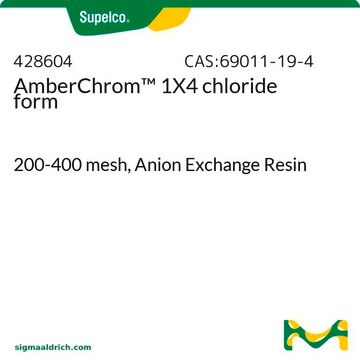22184
Cellulose Chromatography Resin
acid washed, powder, 60-700 mesh
Synonym(e):
Baumwolllinters
About This Item
Empfohlene Produkte
product name
Cellulosepulver, acid washed, powder, for column chromatography
Qualität
for column chromatography
acid washed
Qualitätsniveau
Form
powder
Methode(n)
LPLC: suitable
Faser L
0.02-0.25 mm
Matrix
Cellulose
Aktive Matrixgruppe
polymer
Partikelgröße
20-250 μm
Kationenspuren
Cu: ≤10 mg/kg
Fe: ≤20 mg/kg
Trenntechnik
size exclusion (SEC)
InChI
1S/C12H22O11/c13-1-3-5(15)6(16)9(19)12(22-3)23-10-4(2-14)21-11(20)8(18)7(10)17/h3-20H,1-2H2/t3?,4?,5?,6?,7?,8?,9?,10-,11?,12+/m1/s1
InChIKey
GUBGYTABKSRVRQ-WFVLMXAXSA-N
Suchen Sie nach ähnlichen Produkten? Aufrufen Leitfaden zum Produktvergleich
Allgemeine Beschreibung
Anwendung
Lagerklassenschlüssel
11 - Combustible Solids
WGK
WGK 1
Flammpunkt (°F)
Not applicable
Flammpunkt (°C)
Not applicable
Persönliche Schutzausrüstung
Eyeshields, Gloves, type N95 (US)
Choose from one of the most recent versions:
Besitzen Sie dieses Produkt bereits?
In der Dokumentenbibliothek finden Sie die Dokumentation zu den Produkten, die Sie kürzlich erworben haben.
Kunden haben sich ebenfalls angesehen
Unser Team von Wissenschaftlern verfügt über Erfahrung in allen Forschungsbereichen einschließlich Life Science, Materialwissenschaften, chemischer Synthese, Chromatographie, Analytik und vielen mehr..
Setzen Sie sich mit dem technischen Dienst in Verbindung.




